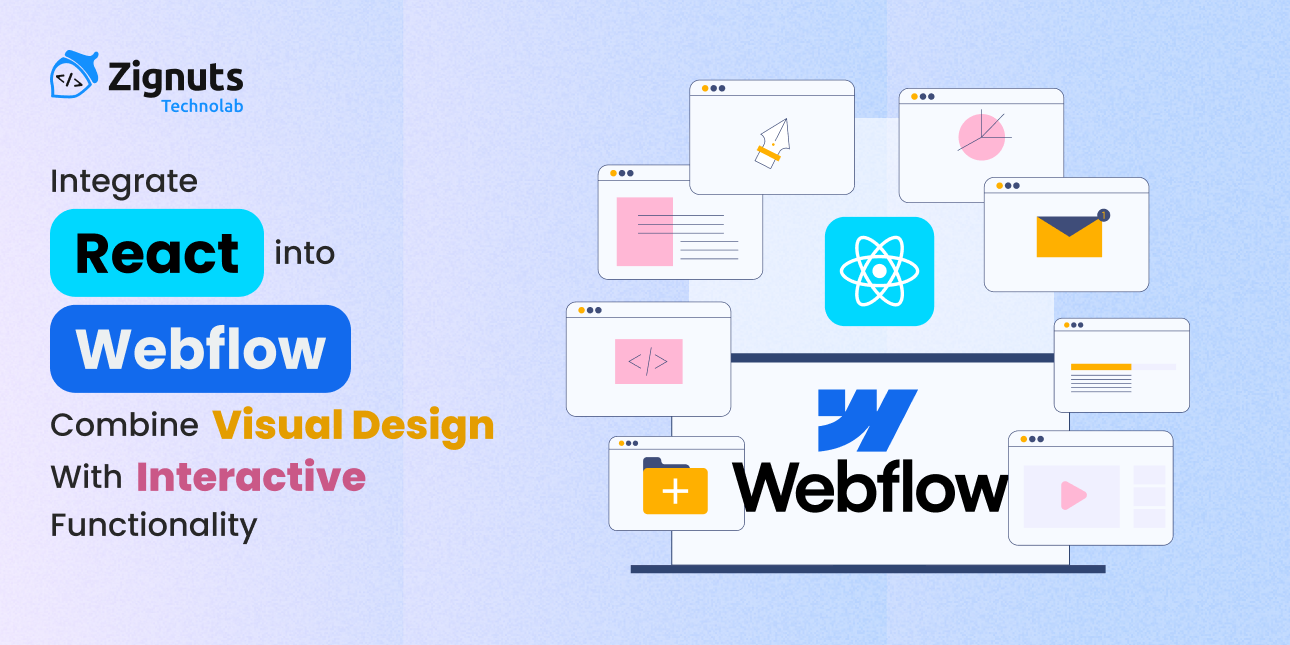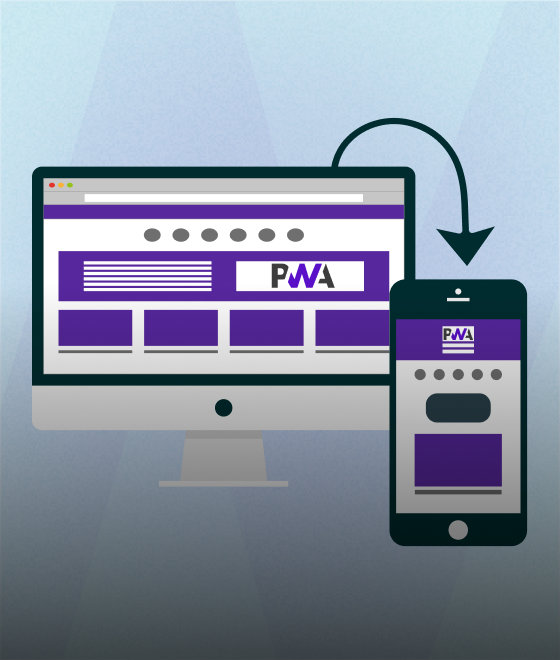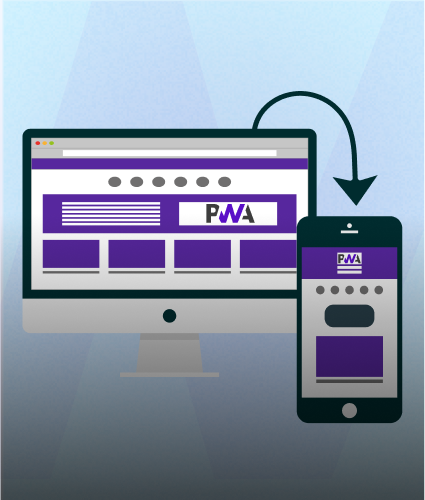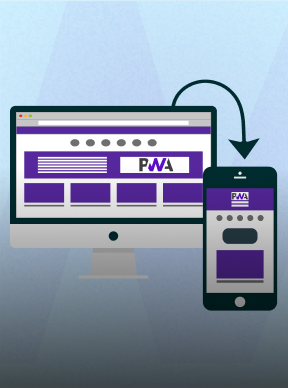How Can I Use Webflow with React? Give Your Visual Designs Dynamic Power.
Webflow is an incredible no-code design platform — it lets you create pixel-perfect layouts, animations, and CMS-driven pages without writing a single line of code. But as projects evolve, you might hit a ceiling. What if you need a live search bar that filters content instantly? Or a product configurator that updates dynamically as users interact?
That’s where React comes in.
React, the popular JavaScript library from Meta, empowers developers to build reusable components, handle complex logic, and bring interactive experiences to life. By integrating React into Webflow, you can blend no-code design flexibility with programmatic power giving you the best of both worlds.
In this guide, you’ll learn three major ways to use React inside Webflow:
- Using Webflow DevLink to export visual components into React
- Embedding a React app bundle into Webflow
- Connecting React with Webflow APIs for real-time data
Let’s break them down one by one.
Why Combine React with Webflow?
Before diving into the “how,” it’s worth understanding the “why.”
Webflow is perfect for building static sites, CMS blogs, or even eCommerce stores quickly. But it’s not built for:
- Complex interactivity (multi-step forms, live search, etc.)
- Custom dashboards or dynamic widgets
- Integration with third-party APIs or real-time data sources
React fills that gap. By combining Webflow’s visual builder with React’s component model, you can:
- Extend Webflow designs with interactive UI components
- Connect with external data sources or APIs
- Implement custom logic without hacking Webflow
- Maintain a clean separation between design and code
Now, let’s see the different approaches to make this happen.
1. Using DevLink for React Component Synchronization
DevLink is Webflow’s native bridge between your Webflow project and React codebase. It allows you to design visually in Webflow, then sync those components into your React app as reusable, production-ready code.
Think of it as a two-way handshake between designers and developers.
🔹 Key Features of DevLink
- Visual component building without manually writing JSX
- Auto-generated React components that include Webflow styling
- Props and slots support for dynamic data
- Sync updates from Webflow to your React project
🔹 How It Works
- Enable DevLink
In your Webflow project, go to Settings → DevLink, and turn it on. - Design Components Visually
Create reusable components (like a card, hero section, or button) in Webflow. - Define Props
Assign dynamic fields to props, so your React app can inject content dynamically.
Connect via NPM
In your React project, install the DevLink NPM package and connect it to your Webflow project.
Import Components into React
This method is best when you want a consistent design system between Webflow and React, or when teams collaborate designers in Webflow, developers in code.
2. Embedding a React App Inside Webflow (Custom Code Method)
If you already have a React app or a standalone component (like a form, calculator, or widget), you can embed it directly inside Webflow using Custom Code Embeds.
This method doesn’t require DevLink. You simply build, host, and load your React bundle into Webflow.
🔹 Step-by-Step Setup
Step 1. Build Your React App
You can use any setup - Create React App, Vite, or Webpack manually. For example:
This will generate a /build folder containing your production files, including a bundle.js.
In your React component:
Notice the react-target ID - that’s where your component will render.
Step 2. Host the Bundle
Webflow doesn’t allow uploading .js bundles directly, so you’ll need to host them externally.
You can use:
- AWS S3
- Cloudflare R2
- Vercel / Netlify static hosting
- Or any public CDN
Once hosted, you’ll get a URL like:
https://your-bucket.s3.amazonaws.com/bundle.js
Step 3. Add Scripts to Webflow
In your Webflow Project Settings → Custom Code, add the following inside Before </body>:
Step 4. Create a Target Container
In the Webflow Designer, add a div where you want your React component to appear.
Give it an ID: react-target.
When your page loads, React will mount the component there.
Step 5. Optional: Reinitialize Webflow Interactions
Sometimes React can break Webflow’s built-in animations (IX2). Reinitialize them after React mounts:
That’s it! Publish your Webflow site you’ll see your React app running inside it
3. Using Webflow APIs with React for Dynamic Data
The third - and most advanced - method is integrating React directly with Webflow’s APIs.
This allows you to build data-driven applications that sync with Webflow CMS, collections, forms, and more.
🔹 Webflow API Capabilities
Webflow offers REST APIs to manage:
- CMS collections and items
- Site publishing
- Form submissions
- Webhooks for real-time updates
🔹 Example: Display CMS Data in React
Suppose you want to show a list of CMS blog posts in a React app outside Webflow.
Then, inside your React component:
With this approach, you can read, create, or update CMS items programmatically - perfect for dashboards, admin panels, or real-time content updates.
You can also configure webhooks (POST /webhooks) to listen for changes - for example, re-fetch posts when new items are added.
What You Can Build with React + Webflow
Once you know these methods, the possibilities explode
Here are a few practical examples:
- Interactive Dashboards — Pull analytics data from Webflow CMS and render charts using React libraries like Recharts or Chart.js.
- Product Configurators — Let users customise colours, sizes, or add-ons in real time, updating the visual layout inside Webflow.
- Dynamic Widgets — Add calculators, search bars, or pricing sliders without needing Webflow’s limited logic tools.
- Multi-step Forms — Build complex, validated forms with React Hook Form and integrate them into your Webflow design.
- Real-time Collaboration Tools — Use React with Firebase or Supabase for shared experiences displayed inside Webflow layouts.
Choosing the Right Approach
For most startups or agencies, starting with the Custom Code Embed is easiest. As your team grows, DevLink ensures seamless designer-developer collaboration.
At Zignuts, our expert developers specialise in bridging design and functionality through advanced integrations like React and Webflow. Whether you need a dynamic website, a real-time web app, or a custom CMS-driven experience, our team delivers high-performance, visually stunning solutions tailored to your goals. Partner with us to transform your design ideas into interactive digital products that stand out. Contact us today to discuss your project and bring innovation to life.
Final Thoughts
React and Webflow are powerful individually, but when combined, they unlock next-level web experiences. You get no-code design freedom from Webflow and developer flexibility from React.
Whether you’re embedding a widget, syncing CMS content, or creating real-time dashboards, integrating React into Webflow transforms your site from static to interactive without sacrificing design precision.
Start small: embed a single React component, experiment with API calls, and grow from there. Once you taste the flexibility, you’ll never look back.




.svg)

.svg)



.svg)

.svg)


.png)









.png)
.png)
.png)
.png)
.png)
.png)



